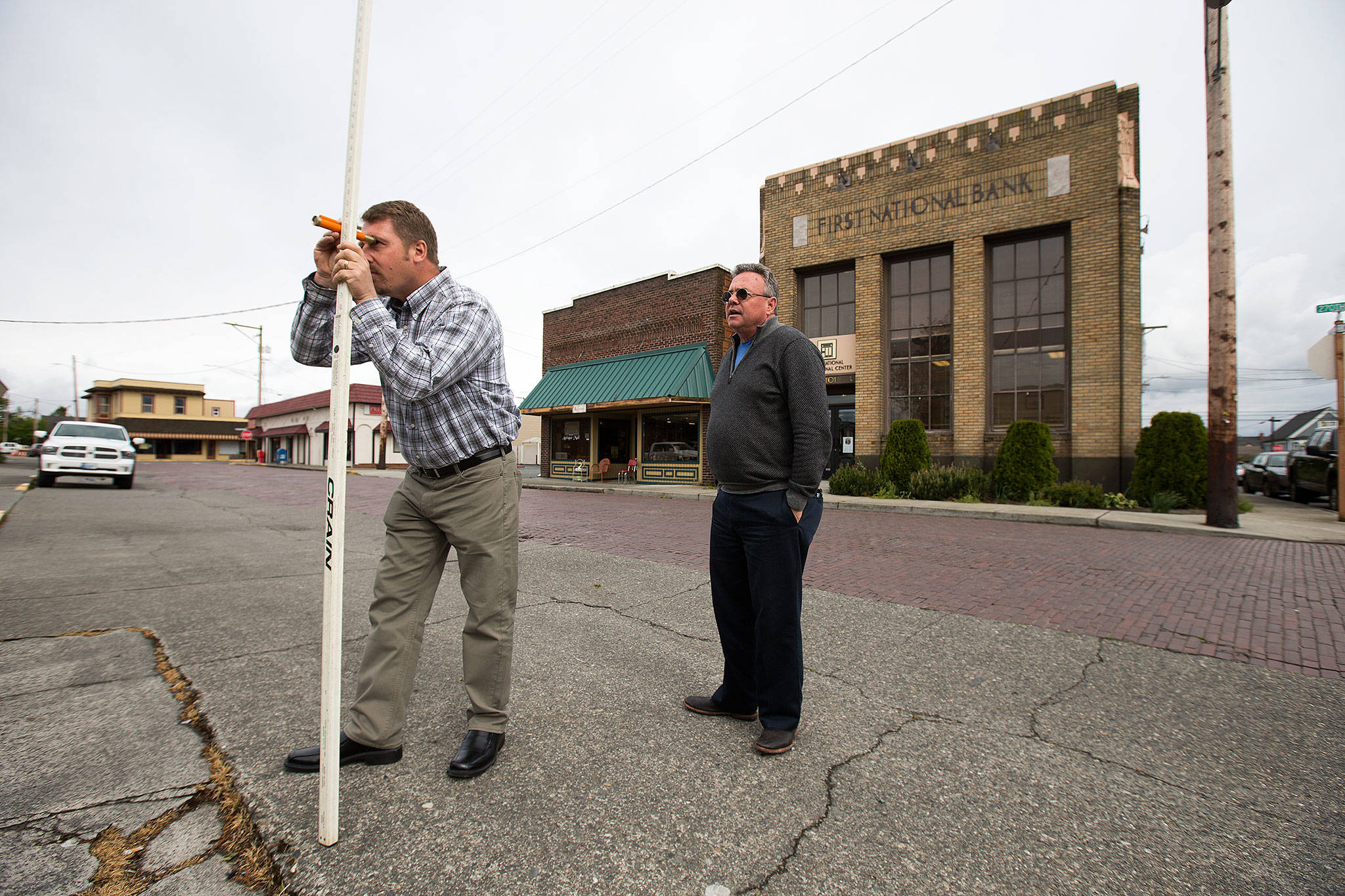STANWOOD — A year-long project with Western Washington University is planned to study flood risks in west Stanwood and find options for business and homeowners to protect properties and lower insurance rates.
The Stanwood City Council voted last week to be part of the university’s Sustainable Communities Partnership. The program lets students gain experience while helping solve issues highlighted by the cities. In Stanwood’s case, the issue is a historic downtown that sits in the floodplain of the Stillaguamish River, creating difficulties for those who want to live or run a business there.
For years, the city has been searching for ways to keep downtown viable for small businesses and prospective homeowners, but the costs of insurance or building and renovating in the floodplain make it tricky. Some owners or tenants, including the city itself, have looked to move to higher ground. Leaders have considered relocating City Hall and the police station to property near Church Creek Park. Still, dozens of businesses and organizations remain in the old downtown, some in historic buildings lining a red brick street that speaks to Stanwood’s past.
The WWU project is geared toward connecting with people who live and work in west Stanwood and gathering data.
Stanwood is the second city to partner with WWU under this program, which was launched in September 2016 with help from the Association of Washington Cities. The first partnership involved projects in Edmonds, among them mapping attractions and researching ways to manage stormwater. That work is set to wrap up in June, with the Stanwood project starting in July.
The effort is focused on the area west of 99th Avenue NW and north of Highway 532, city administrator Deborah Knight said. Students, instructors and city staff plan to identify properties affected by increasing flood insurance costs, then look for options to protect structures and lower premiums, according to a city staff report and agreement with the university. The work could add weight to Stanwood’s application for the federal Community Ratings System and a possible 10 percent drop in insurance rates, Knight said.
Rates depend on many factors, including location and elevation, foundation and flood-proofing measures, what the site is used for and when it was purchased. Prices range from hundreds of dollars per year to thousands. It can be a deal breaker for small business owners or first-time home buyers.
The city expects to pay WWU $30,500 to offset the cost of staff, transportation and supplies. The money is coming from a surge in building permit revenue this year; the city anticipated about $50,000, and collected nearly $108,000.
WWU students participate in the project as part of a capstone class, one of the final courses required to graduate in their major. Up to 100, mostly in the environmental science program, likely will have touched the project by the end of it, coordinator David Davidson said. A few will be interns, including a journalism student for outreach and a geographic information systems intern for data mapping.
‘The issues with the west Stanwood floodplain can be sensitive,” Davidson said. “I think we offer them a neutral, credible source of data, and we do it for an affordable price because our students are in it for the education, not the money.”
He estimates there are about 250 structures in the project area. Students plan to meet with property owners, measure the elevation of ground floors, study size and types of foundations and put together a system to track and view data. In the classroom, they’ll study the changing nature of flood threats due to factors such as rising sea level.
The city plans to reach out to business and homeowners this summer with more information.
Kari Bray: 425-339-3439; kbray@heraldnet.com
Talk to us
> Give us your news tips.
> Send us a letter to the editor.
> More Herald contact information.

























